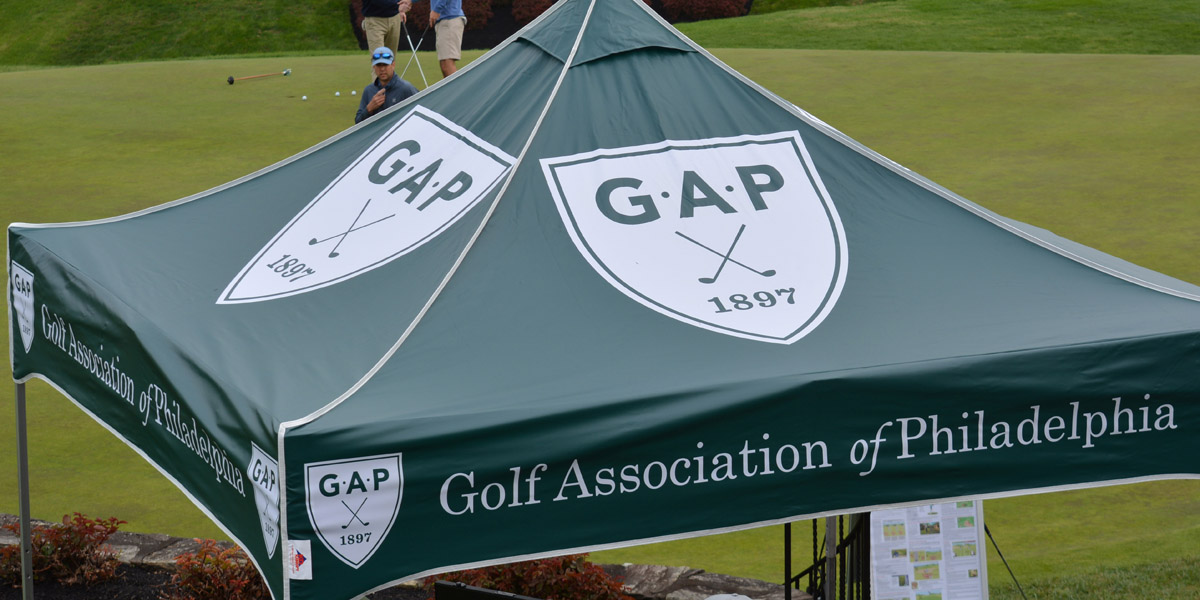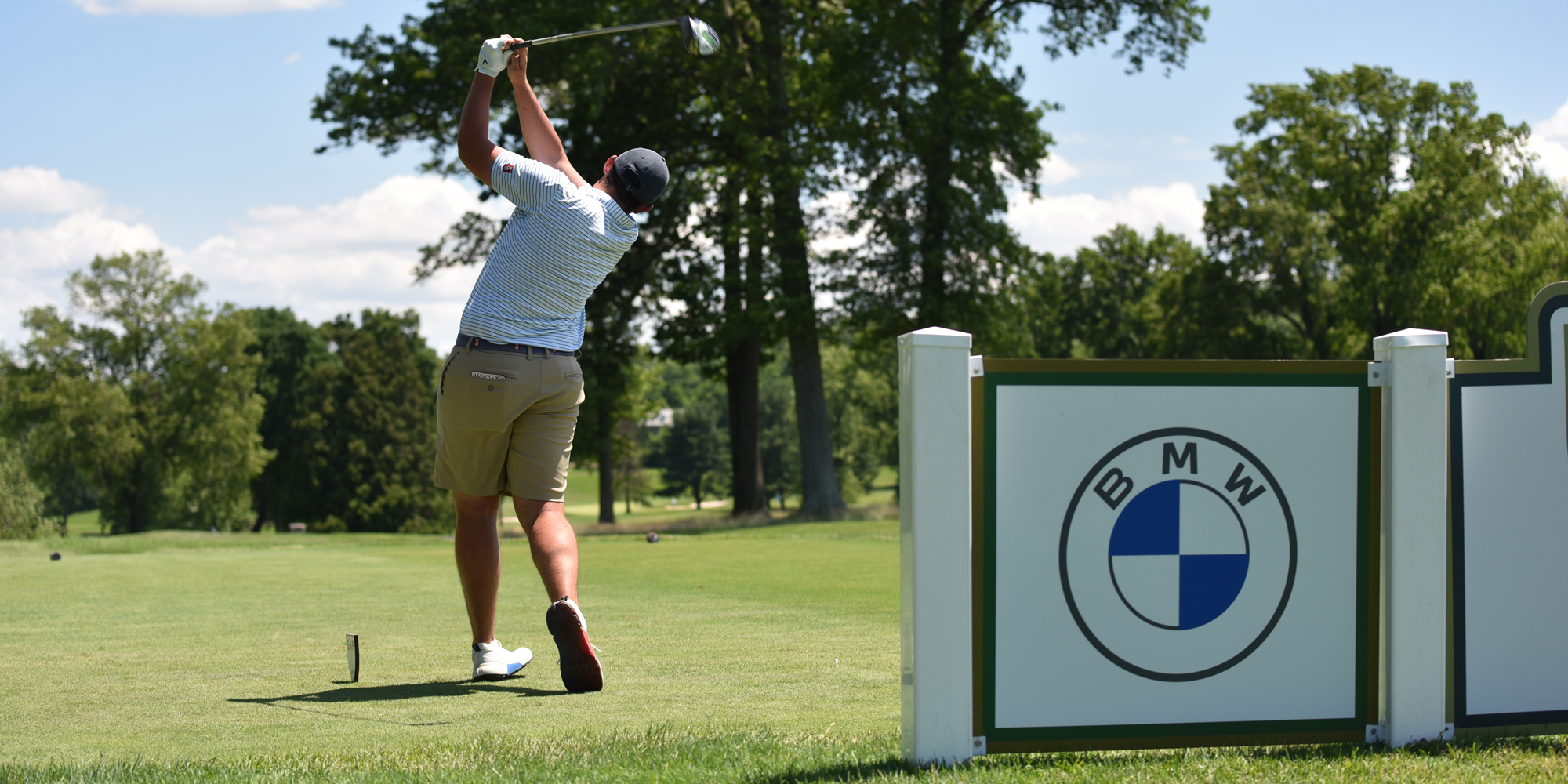About GAP
Rules Official

Tournament Volunteer Application
The Rules of Golf definition:
  A referee is one who is appointed by the Committee to accompany players to decide questions of fact and apply the Rules. He must act on any breach of a Rule that he observes or is reported to him.
Spirit of Officiating
  Participants in an event are keenly conscious of the spirit in which it is conducted. There is no more certain way to hurt the reputation of a tournament than by lackadasical management. It may be difficult and unpleasant to be totally precise in enforcement of Rules, but it is a rare golfer who does not prefer to compete in a well-run event. Authority should be exercised for the sole purpose of helping to ensure that an event will be fairly played under sporting conditions.  Officials should remember that, as members of the Committee, their primary role is to lend assistance and offer counsel so as to help contestants avoid unnecessary penalties and to obtain relief when entitled under the Rules. Officials are cautioned not to use their position simply to watch play; this is very distracting and quickly recognized by the players and fellow officials.
  The two greatest sources of officiating error:
- “Fear of Embarrassment” which does not allow an Official to seek outside help when he is legitimately uncertain as to how to handle a situation.
- “Time Pressure,” which an Official places on himself in the mistaken belief that he is expected to make a Rules decision instantaneously and without the use of backup material.
Take Plenty of Time to
- Know the Rule involved
- Resolve questions of fact
- If in doubt - GET HELP
- Be kind – non-confrontational
- Try not to let things drag out
- Intervene immediately to prevent a violation
- Intervene immediately to stop a violation from getting worse
- If a violation can’t get worse inform the player before the next stroke
Prior to the Event
- Review GAP Hard Card for conditions and policies.
- Review notices emailed prior to tournament.
- Be familiar with venue, anticipated conditions, format and Rules of Golf.
- Please come prepared. Bring with you appropriate clothing/umbrella for the day.
Day of the Event
- When you arrive check-in with staff in scoring area, pickup prepared materials and radio.
- Review Local Rules established for the day / ask questions if you have any.
- At check-in the staff will ask you to take either the front 9 or back 9
- When setting tee markers/signs the staff will either give you yardage’s to go by or will have painted marks on the tees
- Be sure to remove all other club tee markers off to the side or in an inconspicuous area (at GAP events the only tee markers on the course should be GAP tee markers).
- Make sure the markers are pointing toward the hitting area and GAP logos are facing the teeing ground.
- Tee markers should not be positioned any wider than 5 to 7 paces in width.
- Position hole signs within a yard of the tee markers so that players won’t accidentally get between a marker and the sign rather than the 2 markers and facing the direction players will be approaching.
- Give thought to the positioning. Sometimes staff will have picked a location based on prime weather conditions and conditions have changed. Sometimes the location may have been picked based on yardage on a scorecard and we didn’t know there were tree branches interfering with play. If there is any doubt to the situation call the Official-In-Charge to discuss. Players will need to be informed of the change.
- Make sure divot boxes, ball washers, etc. are positioned properly if possible.
• Setting Tees
  If tee markers are already positioned by the grounds crew it will be necessary to check their work. Walk onto each teeing ground and make sure there are no mistakes, go through the above steps.
•Checking the Course
  After leaving the teeing ground and as you drive each hole you should be looking for the following issues:
- Is out of bounds properly defined? Be sure you can see from one white stake to the next.
- Are the hazards properly marked? Hazard stakes should be visible and there should be a line on the ground connecting all the stakes.
- Is there ground under repair that needs to be marked? If there is something that needs to be marked coordinate with the Official-In-Charge.
- Are there any maintenance issues? Look for leaking sprinkler heads, bunkers that are un-raked, and ensure that rakes are outside of the bunkers.
- Locate any ball drop areas to ensure they have been painted and that you are aware of their location for future rulings.
- Make sure that any mowing/golf course preparation will not interfere with play. i.e. – Is the staff far enough ahead. Coordinate this information with the Official-In-Charge.
- Make mental notes as you drive the front 9/back 9 as to where there might be possible issues (blind hazards, blind tee shots, blind out of bounds, possible pace of play problems and pick the best spot to position yourself.
- Coordinate this with the Official-In-Charge when you have completed your review.
The Putting Green
- When arriving at the putting green position the reflector on top of the flagstick. If possible, some flagsticks do not fit GAP reflectors and some courses use their own.
- Check the exact hole location to insure it the same as what we have advertised (See attached reminder).
- Roll a couple balls to each hole location from several directions to see if the hole location is puttable.
- Make sure there is no damage to the hole/around the hole and that liner is set at least 1 inch below the lip of the hole, if possible.
- First and foremost know and understand the Pace of Play Policy. (Attached)
- Keep good notes when the starters indicate that their tee is running behind.
- On-Course Committee should be on the lookout for slow play.
- The most obvious indication of slow play is when there is more than one hole open ahead of a playing group.
- Before making contact with a group of players, who appear to be playing slowly, advise the Official in Charge of the situation; determine whether the group in question started play on time and check their elapsed time.
- It is our duty to be actively working to resolve pace of play issues. When issues take a proactive approach to solve the problem. If we wait and take a reactive approach we have already lost the battle.
Carts
- The carts are provided as a courtesy by the Host Club.
- Try to follow cart rules for the day, unless there is an emergency.
- Please do not drive in restricted areas.
- Do not give rides to spectators or contestants.
- Limit movement to a bare minimum.
- Do not roam from your assigned holes.
- Do not leave car keys in an unattended cart.
- Please fasten your Committee Sign to the front of the cart.
- As available, each Official will be assigned a radio.
- Use the earphones. There is a variety of types for everyone.
- Unnecessary comments should be withheld. Please be aware that the club staff has a radio.
- The radios are expensive and should be cared for.
- Do not leave the radio in an unattended cart.
- Radio transmission should be kept as brief as possible. (I still enjoy a good joke occasionally.)
- Rules questions should be discussed with the Official-in-Charge.
- When rain or bad weather threatens, keep off the air. If you can help the situation, (i.e. - if you see lightning) inform the Official in Charge and then listen for directions. The Official in Charge must have access to the radio frequency during weather situations.
- Report radios that are not in good working order to Staff.
Lunch and snacks
- Arrangements have been made with club to put all purchases on the GAP charge.
- You are welcome to stop at the halfway house whenever you need to.
- Typically, it is difficult to find coffee or food first thing in the morning.
- We will start the shifts for lunch around 11:00 am.
- Please go to lunch individually and not as a team. We have limited resources around the time that lunch begins (i.e. the second waive of starting times is about to begin and we have a golf course full of players).
- Officials that arrive first will be given the first opportunity for lunch.
- Please limit your lunch break to 30 to 45 minutes, remember there is another official waiting to eat.
- Coordinate with Official-In-Charge for golf course coverage while you are gone.
- Coordinate with the staff on picking up GAP equipment. (tee markers, hole signs, reflectors, stakes).
- To a limited extent the policy that we enforce as an Association is the policy we should follow at events (no cell phones). However, we understand that there will be times in which you will need to make a call or return a call. We hope you understand that the event/players need your attention.


